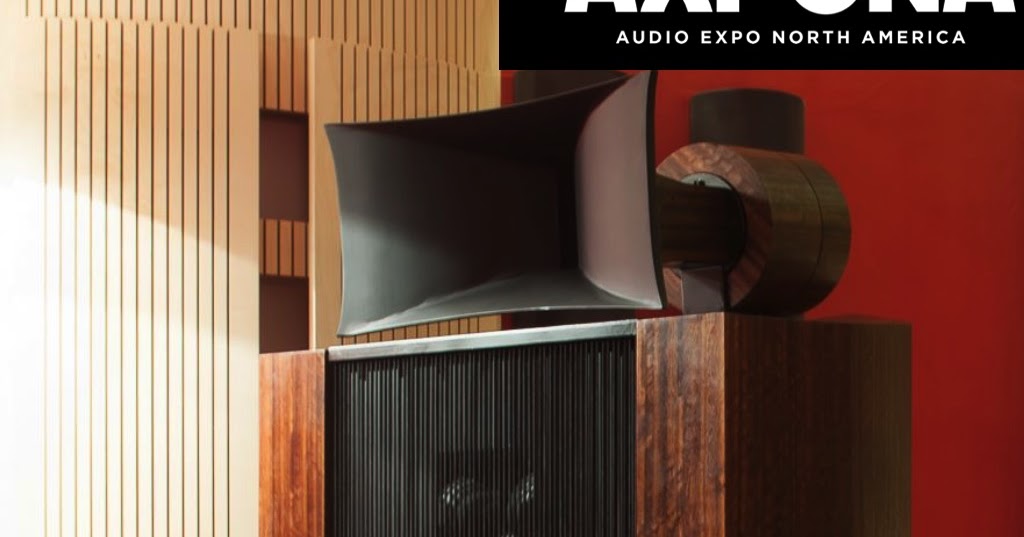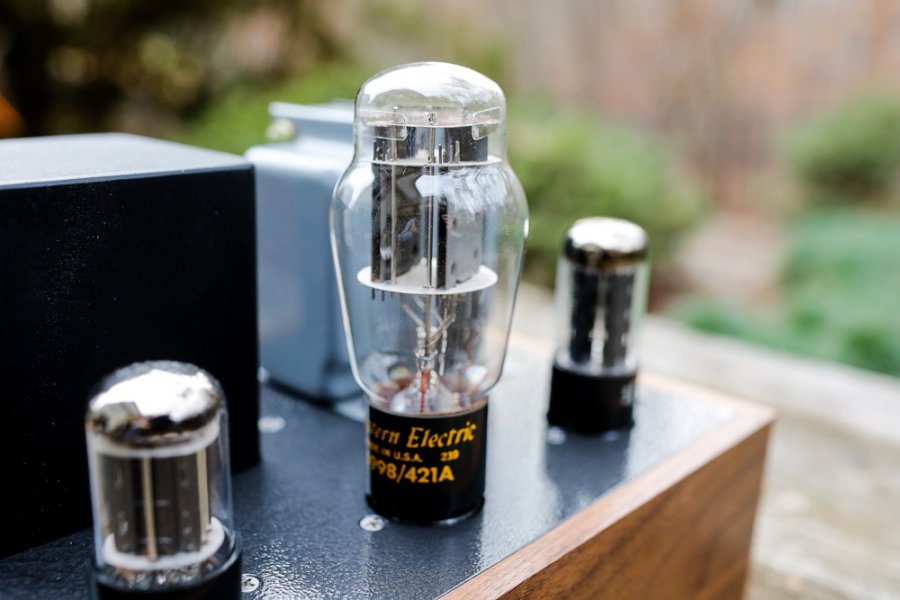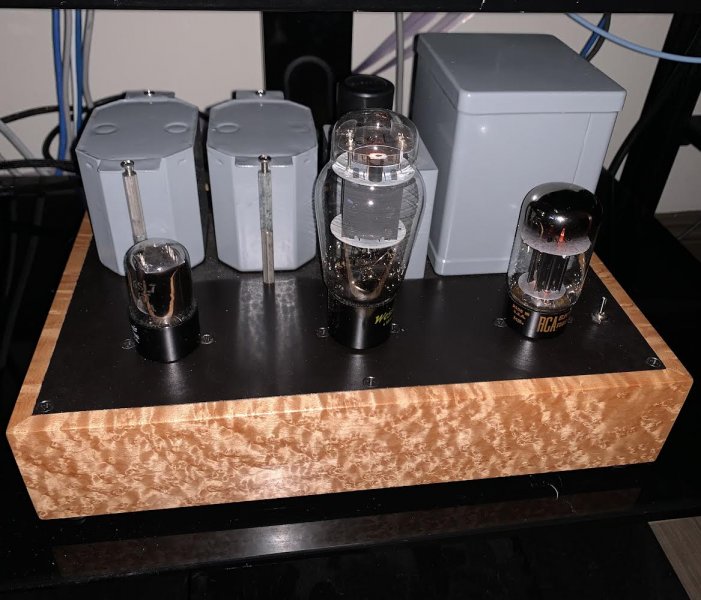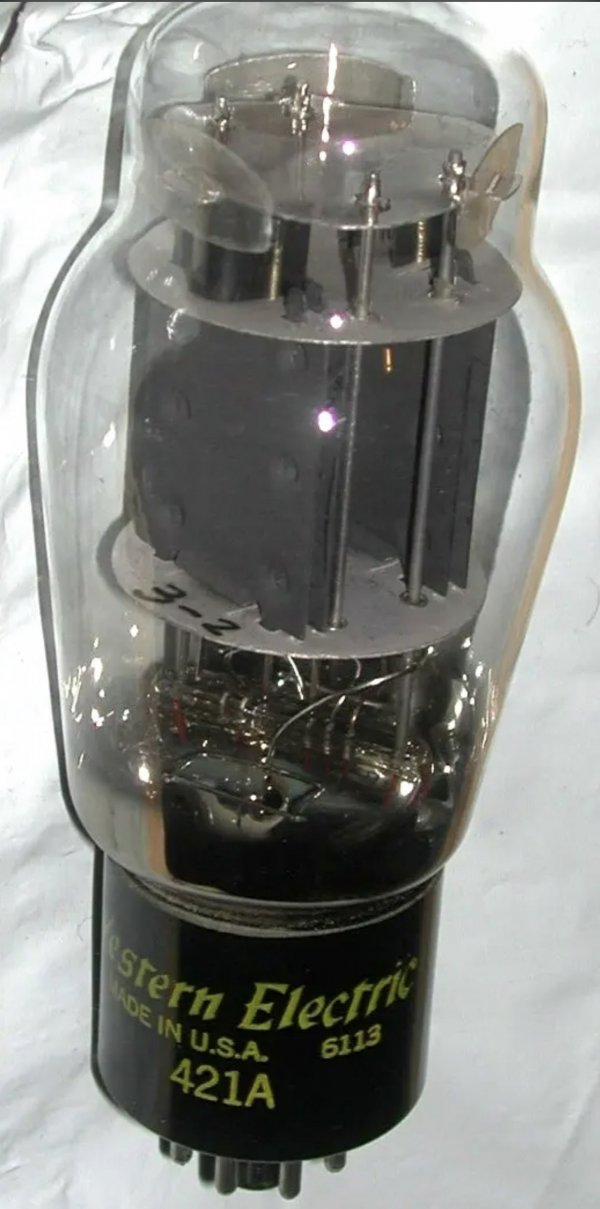What’s the world’s best 2 watt amplifier?
- Thread starter godofwealth
- Start date
You are using an out of date browser. It may not display this or other websites correctly.
You should upgrade or use an alternative browser.
You should upgrade or use an alternative browser.
Just bought two matched pairs of Brimar CV 1985 octal preamp tubes from a seller on eBay. NOS tubes from a long time ago. My Cary 300B SET uses these tubes. Quite reasonably priced. About 15 pounds per tube.
Attachments
Has anyone heard SET amplifiers using the Western Electric 421a tube? It sounds quite intriguing. Only one tube needed for both channels as it is a dual triode type tube. Originally intended for non-audio purposes, but I understand Donald Garber, the SET genius brought this tube to notice with his 421a design.
Attachments
Not quite ;What I find remarkable is the passion these designers bring to their work. Also striking how most market audio rags (Stereophile, TAS etc.) ignore these products.

Jana's Day 3 at AXPONA
I love tubes and horns. So naturally, when Jason and I were dividing up rooms, I leapt at the opportunity to cover Destination Audio, a company rumored to execute tubes and horns well, even in small hotel rooms.
10 Systems That Impressed At AXPONA 2017 AXPONA Show Report By Dave Hanson
10 Systems That Impressed At AXPONA 2017 AXPONA Show Report By Dave Hanson Of Enjoy the Music.com
www.enjoythemusic.com

Axpona 2019 report - So many toys, so little time!
Mono & Stereo High-End Audio Magazine: Magico - Nagra - Tidal Audio - Wilson Audio - MSB - Totaldac - Living Voice - Taiko Audio - Aries Cerat -Thrax

and more
All of the examples were in show reports. Little or no attention is paid to low volume products by the mainstream press. Various listed reasons why. I also get that it can be a 2 edge sword in that more exposure can wreck a company with overwhelming demand. There’s enough of a network that niche products that stand out can find a market.Not quite ;

Jana's Day 3 at AXPONA
I love tubes and horns. So naturally, when Jason and I were dividing up rooms, I leapt at the opportunity to cover Destination Audio, a company rumored to execute tubes and horns well, even in small hotel rooms.www.stereophile.com
10 Systems That Impressed At AXPONA 2017 AXPONA Show Report By Dave Hanson
10 Systems That Impressed At AXPONA 2017 AXPONA Show Report By Dave Hanson Of Enjoy the Music.comwww.enjoythemusic.com

Axpona 2019 report - So many toys, so little time!
Mono & Stereo High-End Audio Magazine: Magico - Nagra - Tidal Audio - Wilson Audio - MSB - Totaldac - Living Voice - Taiko Audio - Aries Cerat -Thraxwww.monoandstereo.com

and more

SW1X Morpheus Mono Power Amplifiers
MPA III is a Pure Class A, Zero Negative Feedback, Directly Heated Triode, Fully Valve Rectified, Single Ended, 3 Gain Stage, Interstage Transformer coupled, Mono Power Amplifier.
The Directly Heated 45 Triodes at the output are well known for their superbly refined & magical sound signature.
The 45 valves are de-coupled by Interstage transformers and driven by 6V6 power valves to enhance the refined sound of the 45 triodes with powerful character of the 6V6.
Combined with the finest Materials & Components, MPA III is extremely refined & musical sounding, especially when combined with high sensitivity speakers
SW1X Audio Design™ MPA III Mono Power Amplifier Features:
- Specially Selected and Harmonically Matched Component & Material Quality
- Single Ended, absolutely Zero NFB, Class A, Directly Heated Triode Valve Power Amplifier
- 6V6 Valve Driver/6J5 input Stage driving the 2 x 45 DHT Valves
- Interstage Transformer de-coupled, 3 Gain Stage Design
- Hybrid Point 2 Point Hardwiring Technique for the most consistent production results
- Internally wired exclusively with our SW1X Magnum, Genesis and Opus conductors
- SW1X Audio Design™ Custom Designed Copper wound Super HiB DC Core (50 Watt) Signal Output Transformers
- Quasi Mono, Directly Heated Double Diode Valve Rectified B+ Power Supply
- Orient grain M6 EI core mains Transformers & Chokes
- Valve rectified Fixed Bias Power Supply
?? I don't get this. The 6V6 is not a triode and is considerably less linear. Why would you want that driving the output tube? Could you explain?The 45 valves are de-coupled by Interstage transformers and driven by 6V6 power valves to enhance the refined sound of the 45 triodes with powerful character of the 6V6.
[snip]
- Single Ended, absolutely Zero NFB, Class A, Directly Heated Triode Valve Power Amplifier
- 6V6 Valve Driver/6J5 input Stage driving the 2 x 45 DHT Valves
Yes, 6V6 tubes are not particularly linear in pentode mode but connecting them in triode mode is a different story. SW1X would never use them as pentodes.?? I don't get this. The 6V6 is not a triode and is considerably less linear. Why would you want that driving the output tube? Could you explain?
All of the pentodes EL84 or 6V6 they employ are always triode strapped. 6V6 tubes have amazing sound and driving capabilities and are extremely linear within their optimum operating points.
The AN Ongaku power amp has 6V6 tubes driving 211 tubes for a reason.
The GE data sheet shows triode plate curves:extremely linear
How is this 'extremely' linear?
Thomas
Since its transformer coupled anyway, you could use an ultralinear connection. If the tap were placed correctly (and in most, they are not, to avoid infringing a long-expired patent) you could get linearity better than a triode connected pentode, which otherwise is not as linear as an actual triode. The AN reference doesn't say much to me- our S-30 amp is more powerful, more transparent, wider bandwidth and overall more musical without resorting to something like that, for a lot less money.Yes, 6V6 tubes are not particularly linear in pentode mode but connecting them in triode mode is a different story. SW1X would never use them as pentodes.
All of the pentodes EL84 or 6V6 they employ are always triode strapped. 6V6 tubes have amazing sound and driving capabilities and are extremely linear within their optimum operating points.
The AN Ongaku power amp has 6V6 tubes driving 211 tubes for a reason.
Please keep in mind that nearly all ultralinear transformers you know of have been designed to get around that patent I mentioned and don't reflect what ultralinear is really all about.
From a marketing perspective, the tube choice seems like its always going to have to require this explanation. You could get just as robust drive from a 6SN7 if it were wired correctly... the type 45 isn't that hard to drive.
There are many ways to skin a cat, but in the end it is down the sum total of the final build, each part chosen, their location, associated materials and how they interact and balance each other. That’s the artfulness of it.
I had the fi 421a amp a few years back. I would describe the 421a tube as one of the more linear tubes (meaning no emphasis in any part of the frequency range). I definitely prefer the VT52 or 50 in the 4 watt range.Has anyone heard SET amplifiers using the Western Electric 421a tube? It sounds quite intriguing. Only one tube needed for both channels as it is a dual triode type tube. Originally intended for non-audio purposes, but I understand Donald Garber, the SET genius brought this tube to notice with his 421a design.
Don was a really nice guy, and his amps were visually beautiful, but I didn’t find them all that special sound wise.
The SET amp I’m hoping to receive by this weekend uses the Western Electric 421a. One dual triode tube for both channels. The WE 421a tube came today and tests perfectly on my Amplitrex. It’s a custom build by Oliver Sayes. Uses a 6SL7 driver and a 6BY5G rectifier. Will update once I get some time to form an initial impression.


The 421A uses the 8BD tube base (same as the 6SN7 and 6AS7 use). Its an indirectly heated dual triode similar to the 6AS7G but has a higher mu and slightly less plate dissipation. The curves look quite good. Might be fun to build a PP amp using that tube.
Just got my 421a SET. First impressions are very good. The Western Electric 421a is a marvel. One power tube for both channels. 3 watts is plenty for my La Scalas. Has a beautiful refined tone that is more smooth than a 45, but definitely more transparent than the WE 300B sound, which I would characterize as rich but a bit opaque.


Any sound impressions you can share with us?Just got my 421a SET. First impressions are very good. The Western Electric 421a is a marvel. One power tube for both channels. 3 watts is plenty for my La Scalas. Has a beautiful refined tone that is more smooth than a 45, but definitely more transparent than the WE 300B sound, which I would characterize as rich but a bit opaque.
View attachment 102967
Thus far, I have listened to it with a WE 421a tube and a Tung Sol NOS 5998. Both sound really nice. The tone is between the lushness of a 300B and the slightly dry sound of a 45 tube. Think of it as a 45 with a bit more richness to the sound. Imaging width and depth are superlative. For the price I paid, it’s a real bargain. Fortunately even NOS Western Electric 421a tubes are not too expensive (yet). I bought a second WE 421a for around $350 on eBay. 5998s are even cheaper.
Every rectifier I've tried in my Modwright PS 9.0 power supply sounded very different. Designer Dan Wright told me to expect this and encouraged "rectifier rolling". In this device the Sophia blue 274B and GEC/Marconi U52 5U4G are on a level above everything else including the Phillips metal base 5AR4.This is shocking for me. In ALL amplifiers, I experienced improved performance changing rectifiers. During my life, I spend time and money to find WE-274B, Mullard GZ-34 metal base, GEC 5U4, good 5R4, etc...
The load that an SET amplifier circuit presents to the rectifier is constant. This means that the difference you are hearing between various rectifier tubes is the voltage drop across them and nothing more- presumably, the less voltage drop, the better the sound.Every rectifier I've tried in my Modwright PS 9.0 power supply sounded very different. Designer Dan Wright told me to expect this and encouraged "rectifier rolling". In this device the Sophia blue 274B and GEC/Marconi U52 5U4G are on a level above everything else including the Phillips metal base 5AR4.
Guitar players have often been faced with this issue, since a sagging power supply often sounds better for blues guitar in a guitar amplifier. To this end, there is a simple circuit that uses a solid state rectifier system along with a bit of regulation that allows you to dial in the voltage drop for the desired sound.
One advantage of tube rectifiers is they are low noise. You can get similar low noise from solid state rectifiers, but often you have to treat them (snub them) to do it, which can be a bit tricky. I suspect that this would put the rectifier tube thing to bed though, once and for all.
There has to be more to the “sound” of rectifier tubes than just the different output voltages. Let me give two illustrations. First, different brands of the same tube can sound very different, and consistently so—-a GE 5u4GB sounds different from a Sylvania 5u4GB and from an RCA 5u4GB despite all of them having the same output voltage. Second, I have a linestage with a regulated B+ voltage—-whether the rectifier outputs 350 or 390 volts the B+ is held tightly at 275 volts, yet different rectifiers sound different.The load that an SET amplifier circuit presents to the rectifier is constant. This means that the difference you are hearing between various rectifier tubes is the voltage drop across them and nothing more- presumably, the less voltage drop, the better the sound.
Guitar players have often been faced with this issue, since a sagging power supply often sounds better for blues guitar in a guitar amplifier. To this end, there is a simple circuit that uses a solid state rectifier system along with a bit of regulation that allows you to dial in the voltage drop for the desired sound.
One advantage of tube rectifiers is they are low noise. You can get similar low noise from solid state rectifiers, but often you have to treat them (snub them) to do it, which can be a bit tricky. I suspect that this would put the rectifier tube thing to bed though, once and for all.
Similar threads
- Replies
- 0
- Views
- 1K
- Replies
- 17
- Views
- 8K
- Replies
- 7
- Views
- 3K
- Replies
- 0
- Views
- 243
| Steve Williams Site Founder | Site Owner | Administrator | Ron Resnick Site Owner | Administrator | Julian (The Fixer) Website Build | Marketing Managersing |


















